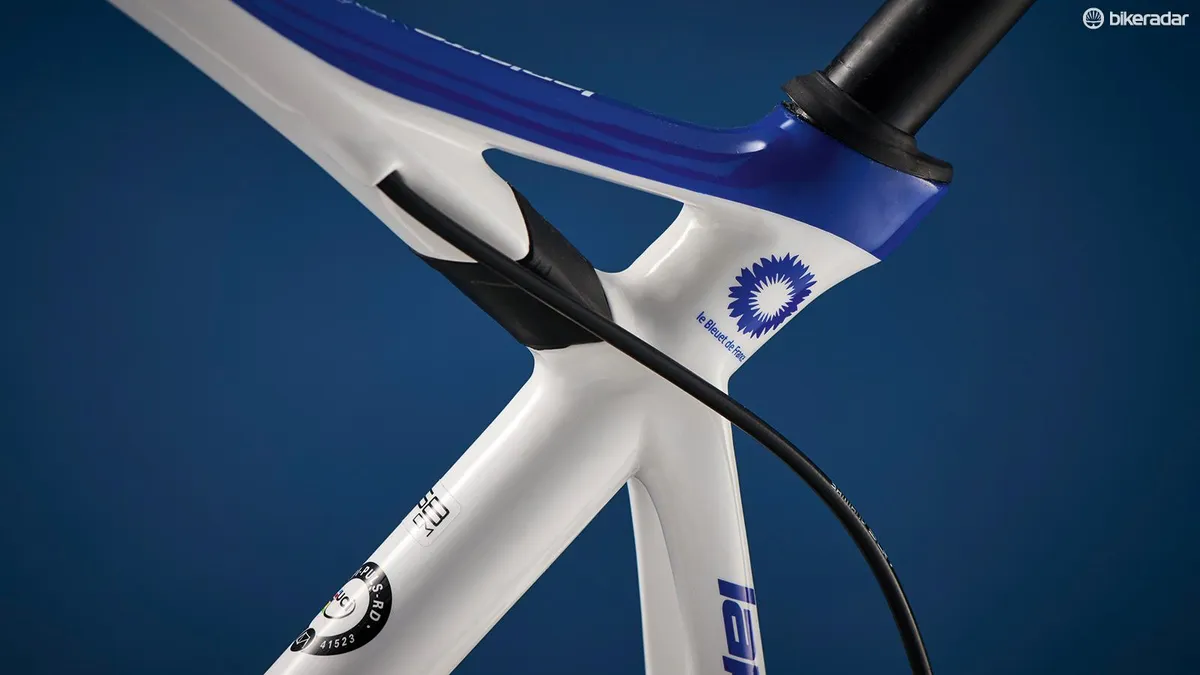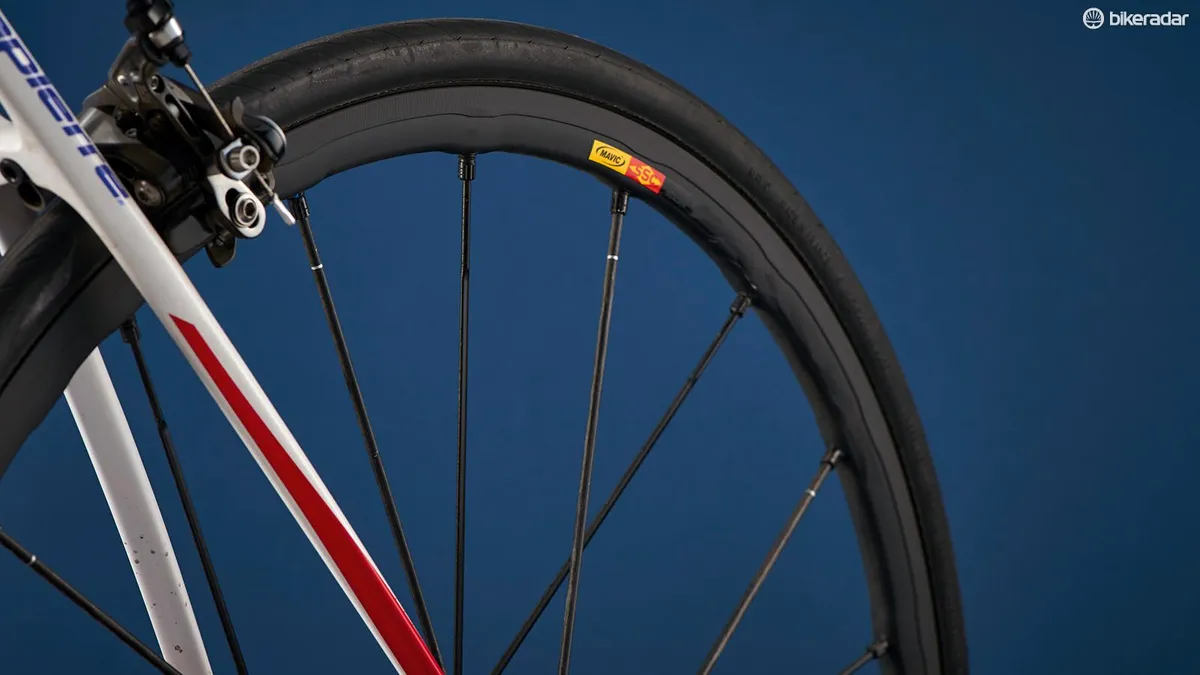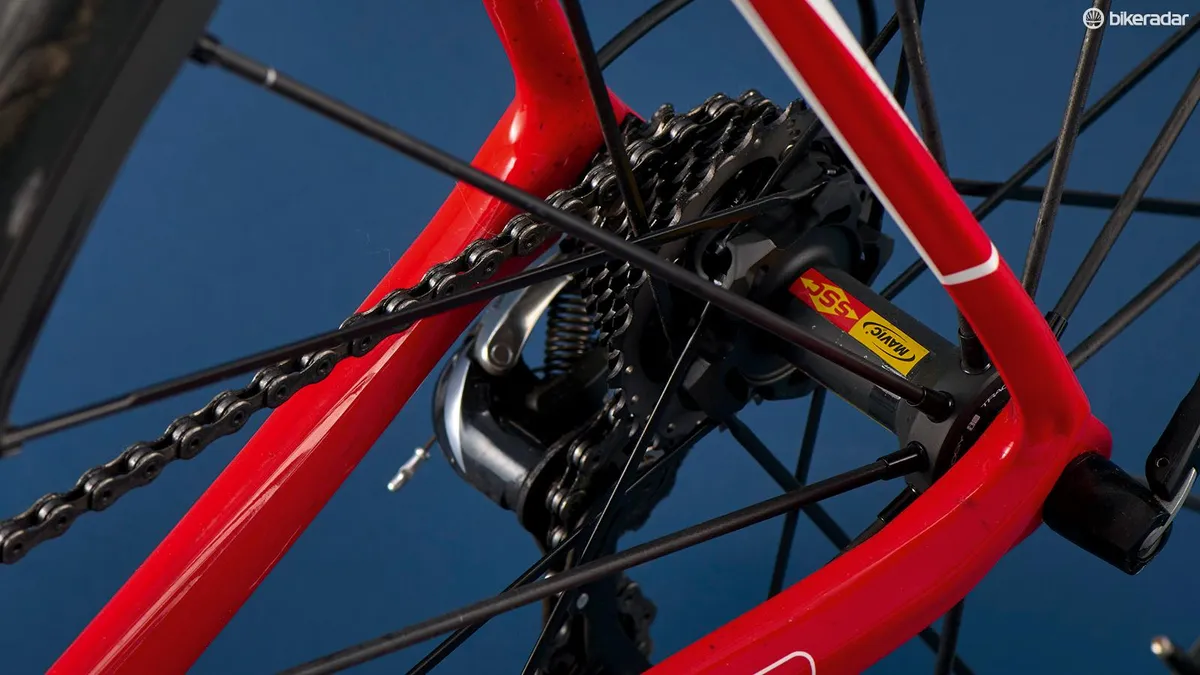Lapierre’s Ultimate system is an online bike builder that allows you to specify the equipment and finish of your chosen bike, which means selecting your colour choice, wheels, components, drivetrain and gearing.
For our review sample, we asked Lapierre to use the Ultimate system to build a bike that’s as close to FDJ’s pro tour Pulsium – ridden by Thibaut Pinot, a podium hopeful until his mechnical-fuelled meltdown on the Stage 4 pavé – as possible.
- Highs: Fabulously smooth ride matched to brilliant handling
- Lows: Tall gearing is for the very, very best climbers only
- Buy if: You want the pro-bike experience with the smoothness and comfort of a class leading endurance bike
That means a full complement of Easton finishing kit, from the brilliant EC90 SLX3 bar with its semi-ovalised top section, mid-compact drop and a stiffness that encourages hard out-of-saddle sprint efforts but doesn’t transmit buzz from rougher surfaces. It’s a clever combination matched with the Pulsium’s smooth carbon fork and supple Pro level 25mm Mavic rubber.
At the back the similarly top class EC90 seatpost and new-shape Fizik Arione saddle are the icing on a very smooth cake. The individual looking Pulsium frame has a top tube that splits forward of the seat tube junction.

Lapierre's SAT (shock absorbing-technology) delivers noise- and vibration-free ride
The top spur of the triangular split is flattened to act like a leaf spring, while the bottom half is separated by a covered tube-shaped piece of elastomer called SAT (shock absorbing-technology). Lapierre claims 27 percent more compliance than on the already comfortable Sensium endurance bike. Unlike the Sensium, however, the Pulsium is designed to be raced by FDJ, sitting alongside the flyweight Xelius and aero Aircode. That means stiffness through the drivetrain is also paramount, so Lapierre has optimised the carbon layup through the front third of the top tube, head tube, down tube and bottom bracket.
On the road the Pulsium is fantastically rapid, the light riding chassis and flyweight wheel package meaning that the Ultimate winds up to race pace in a flash. The response to pedal inputs is truly intoxicating. For what is essentially a soft-tail bike it doesn’t have the same floaty feel of a ride like Trek’s Domane, which it’s obviously compared to a lot.
The effect of the design is still the same; the Pulsium rides noise and vibration free. You can still feel the bumps and divots, but the sharp edged bangs and crashes are muted letting you get on with the business of just going quickly.

The Lapierre’s chainstays are a tad longer than most for more stability on the cobbled Classics
Geometry and shape wise this is very much the racer’s weapon – a long top tube (585mm on our 58cm test bike) with parallel 72.5-degree angles. Lapierre has added a little bit to the head tube at 210mm, coming up 20mm taller than the Xelius. The reach (the horizontal distance between the bottom bracket and head-tube) at 397mm is about the same, but the stack height (the vertical distance between the bottom bracket and the top of the head-tube) of 624mm is taller by 32mm.
The other tweak is in the wheelbase – it’s a little longer (4mm), taking it over the 1m mark. The extension is in the chainstay (412mm). It’s to add a bit of stability to the handling, which is important for FDJ’s riders in the cobbled classics.
The Pulsium is a brilliant bike to descend on. The solid, sharp handling paired with the smooth ride makes for a bike that you can really push hard at speed and feel complete confidence in its ability to hold its line.

Mavic’s R-Sys wheels are light and the brake track effective, but they can screech under braking
The Mavic R-Sys wheels have the latest incarnation of its rim. It’s still based on the cutaway shape but the new 4D profile is smoother and lighter (the wheels weigh just 1295g a pair) and has the latest textured brake surface, Exalith 2, which makes for positive and powerful brake performance. Unfortunately, Mavic still hasn’t cured its propensity to screech occasionally, even with the new soft black brake compound of the pads.
On the climbs things are a little different – not down to the bike, we hasten to add, but more due to the tester. As mentioned, we asked Lapierre to provide us with a bike that was ‘as close to team spec’ as it could, so that’s what we got – pro rider gearing mated to a standard 53/39 chainset with a very close ratio 11-23 cassette.
Thankfully mechanical Shimano Dura-Ace is a dependable and very accurate shifting group – as we did shift a lot. On long climbs we found our cadence dropping and soon bottoming out on the 39/23 combo. The combination of the bike and wheels’ low weight meant we got up every climb, but a wider rear cassette would have made for a more enjoyable experience. We can’t blame the bike, it just made us realise we needed to get better at climbing.


